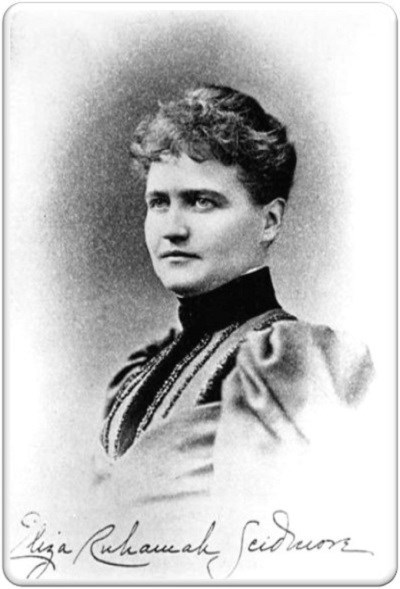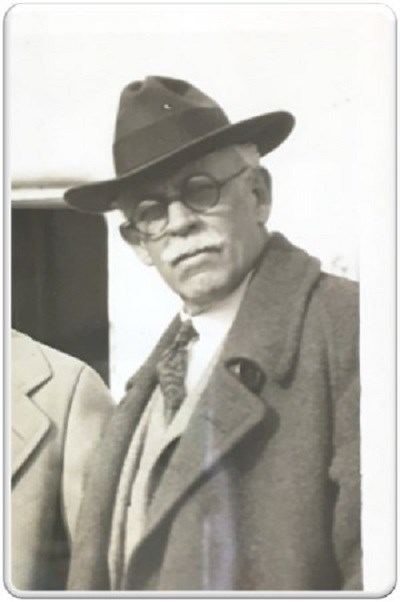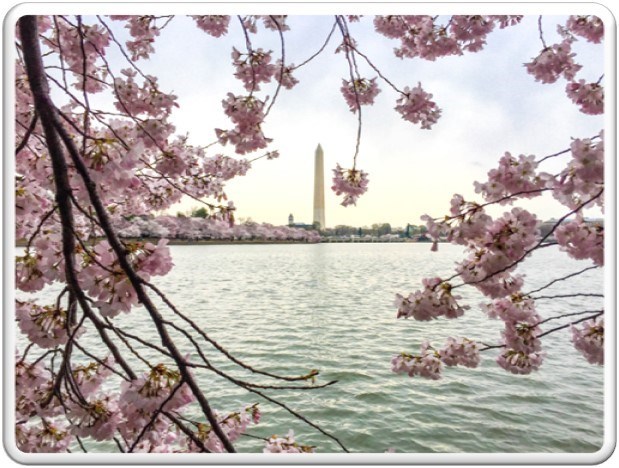Last updated: March 25, 2021
Article
Mystery of the Broken Branch Stop 10: Festival History
Follow the Trail
Follow the trail with Ranger Sarah and a group kids as they search the Tidal Basin for clues about the cherry trees. You can follow along this mystery adventure from home or when visiting the Cherry Blossom Festival at the National Mall and Memorial Parks in Washington, DC.

The map legend says "Story Trail Guide". Stops marked on the map include:
Stop 1: The Trail Begins, which is located on the east end of the Kutz Memorial Bridge on Independence Avenue.
Stop 2: Pollination Station, which is located to the south of Stop 1 on the Tidal Basin.
Stop 3: Write Your Own Haiku, which is located along the Tidal Basin near Maine Avenue.
Stop 4: Cherry Trees Around the World, which is located on the Tidal Basin near the intersection of Basin Drive and Ohio Drive.
Stop 5: Jefferson Memorial, which is located at the Jefferson Memorial plaza on the Tidal Basin.
Stop 6: Japanese Pagoda, which is located at a stone pagoda structure on the west side of the Tidal Basin near the south end of the Franklin Delano Roosevelt Memorial.
Stop 7: Franklin Delano Roosevelt Memorial, which starts at the north end of the Franklin Delano Roosevelt Memorial and continues through the memorial.
Stop 8: The Tree with the Broken Branch, which is located near West Basin Drive just north of the Franklin Delano Roosevelt Memorial.
Stop 9: Dr. Martin Luther King Jr. Memorial, which is located on the plaza of the Martin Luther King, Jr. Memorial.
Stop 10: Festival History, which is located along the Tidal Basin just east of the Martin Luther King, Jr. Memorial.
Stop 11: Hanami, which is located on the Tidal Basin near Independence Avenue between the Martin Luther King, Jr. Memorial and the Kutz Memorial Bridge.
Stop 12: Japanese Lantern, which is located at a stone lantern statue on the west end of the Kutz Memorial Bridge on Independence Avenue.
Stop 10: Festival History
Head to Stop 10 by continuing along the Tidal Basin to the edge of the Martin Luther King, Jr. Memorial. Read the following story to learn more about the history of the cherry blossom tress and the annual festival.

NPS Photo
“Hey, I see another stone statue, but different from the last one,” Haru said, pointing ahead.
“That’s the Stone Lantern,” Ranger Sarah said, looking where Haru pointed. “That is another one of the gifts from Japan. It’s another of the gifts from Japan here at the Tidal Basin. The lantern was a gift symbolizing friendship between the United States and Japan. The lantern is lit every year to begin the cherry blossom festival. Let’s go check it out!”
As they walked closer to the lantern, Ranger Sarah said, “Keep an eye out for a plaque on the ground marking a special historical spot. We are close to where the first cherry trees were planted in the Tidal Basin.
“Who planted them?” Taylor asked.
"Ah, there's a lot of history in that question! There were many people who contributed to planting Japanese cherry trees in Washington DC—and that was just the beginning of the story! I have some pictures of the people here to show you." Ranger Sarah pulled a folder from her backpack and handed the photographs around.

Courtesy of the Anchorage Museum
They were planted more than 100 years ago, in 1912. An intrepid explorer named Eliza Ruhamah Scidmore had traveled to Japan and found the cherry trees very beautiful. She spent decades trying to convince people in Washington, DC to bring cherry trees here!"

Library of Congress /Bain News Service
"Dr. David Fairchild, a botanist from the National Arboretum, decided to try growing cherry trees at his home not far away to see if they would like the climate. This experiment was a success!"

Library of Congress, Barnett McFee Clinedinst

Courtesy of Kinsei Meishi Shashin vol.2, National Diet Library, Japan
The first two trees were planted near here by First Lady Helen Herron Taft and the Viscountess Chinda, who was the wife of the Japanese ambassador to Washington, DC. when the cherry trees arrived."

NPS Photo

Library of Congress
“Its so cool trees can help countries show their friendship!” Jamal said.
